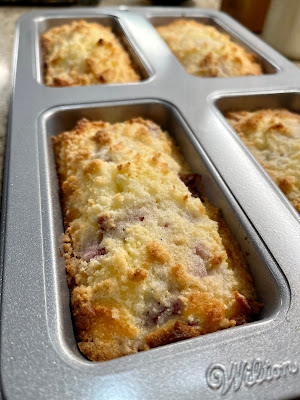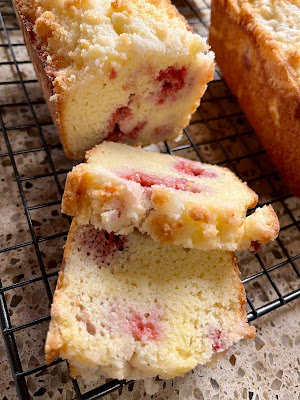I’ve been trying for years to create an authentic, sugar free, Black and White cookie. Well, this is it! In this recipe, I start with raw macadamia nuts and process them in a food processor (or blender) to make smooth and creamy macadamia nut butter. This is the key to making these light, puffy, tender and cake-like cookies, which are the base of this iconic cookie. I chose macadamia nuts for the base of my cookie batter because they are the lowest carb and highest fat of all the nuts, mild in flavor, plus they’re much lower in oxalates, minimizing the need for almond flour. This cookie is a dream come true!
Keto Black and White Cookies
Makes 18 cookies
Cookies:
1½ cups raw macadamia nuts
2 large eggs
1 tablespoon unsalted butter, very soft or melted
1 teaspoon lemon juice
1½ teaspoons vanilla extract
¾ cup powdered low carb sweetener (I used Confectioners LaKanto Monkfruit sweetener)
1/4 cup almond flour
1½ tablespoons oat fiber powder (not oat flour!)
2 tablespoons coconut flour
1 tablespoon unflavored whey protein powder
1 teaspoon baking powder
1/4 teaspoon baking soda
A pinch of salt
1-2 tablespoons water, only if needed!
Glaze:
1½ cups powdered low carb sweetener* (see note)
1 tablespoon vegetable glycerin or liquid allulose (it adds shine to the glaze, omit if you don’t have any)
¾ teaspoon lemon juice
½ teaspoon vanilla extract
2-3 tablespoons water (or more, if needed)
1/4 cup unsweetened Dutch-process cocoa powder
More water for chocolate glaze, as needed
1. Preheat oven to 350°F. Line a rimmed baking sheet with a silicone baking mat or parchment paper.
2. In a food processor or powerful blender, process the macadamia nuts until a smooth nut butter forms, scraping down the sides occasionally. Add the eggs, softened butter, lemon juice and vanilla extract. Process until the mixture is completely smooth and no lumps remain.
3. Transfer the nut mixture to a large mixing bowl. Add the powdered sweetener and, using an electric mixer with the paddle attachment (if you have one), mix until the sweetener is completely incorporated.
4. In a small bowl, combine the almond flour, oat fiber powder, coconut flour, whey protein powder, baking powder, baking soda and salt. All at once, add the dry ingredients to the nut mixture and mix until the ingredients are well combined. Let the batter rest for a few minutes to allow the coconut flour to absorb the liquid, then mix again. What you’re looking for is a thick, but cohesive batter that is like a thick cake batter, slightly looser than a dough. (Only if needed, add water 1 teaspoon at a time until the proper consistency is reached.)
5. Using a 1½ tablespoon cookie scoop (size 40), drop the cookie batter onto the lined cookie sheet about 1½ inches apart. The cookies will spread a bit as they bake.
6. Bake for 12 to 14 minutes (begin checking them at 12 minutes). Bake until they’re lightly golden and the tops are just firm and spring back slightly when touched in the center. Remove the baking sheet from the oven and allow the cookies to remain on the baking sheet for a few minutes. Remove the cookies to a wire rack to cool completely before glazing.
7. To make the glaze, add the powdered sugar substitute, vegetable glycerin or liquid allulose, lemon juice, vanilla, and 2-3 tablespoons of water in a small bowl, and stir until smooth and easily spreadable. Then divide the glaze equally into two bowls. Add the cocoa powder to one and add just enough water until the consistency is the same as the vanilla glaze (adding 1 teaspoon of water at a time; it may take 3-6 teaspoons or more, judge by its consistency).
8. To ice the cookies, use the flat side (bottom) of the cookie and spread each half of the cookie with one of the icings, starting with the vanilla icing. Spread the vanilla on one half of all the cookies first, then coming back later after the vanilla has hardened, and adding chocolate icing to them on the remaining half, so you avoid the colors mixing.
9. Cookies can be stored at room temperature for 2-3 days, or refrigerate for longer periods, but allow the cookies to come to room temperature before enjoying. If stacking cookies in a cookie jar or storage container, place parchment paper between layers to prevent the icing from sticking.
*Notes: You can use an erythritol-based powdered sweetener (best option), such as Confectioners LaKanto Monkfruit sweetener. But because of the slight cooling effect, some people put off by that sensation might wish to use powdered allulose for the glaze. Allulose doesn’t have a cooling affect or aftertaste. If you can’t find powdered allulose, you can powder it yourself in a food processor. But NOTE: Allulose doesn’t absorb liquid in the same way as erythritol. Use less liquid, if using allulose. Also, icing made with allulose really doesn’t set up. It remains soft and sticky. Tastes delicious, but if you want to store them on top of each other in a cookie jar, don’t use allulose.
Nutritional Information per cookie (with glaze): 106 calories, 6.1 g carbohydrate (1.8 g dietary fiber, 0.6 g sugars, 2.4 g sugar alcohols), 10.2 g total fat (2.1 g saturated fat, 0 g trans fat), 22 mg cholesterol, 87 mg sodium, 15.8 mg calcium, 71 mg potassium, 1 mg iron, 15 IU Vit A, 2 g protein. Net carbs per serving: 1.9 grams
Photos and recipe by Kathy Sheehan, copyright 2023
All rights reserved. Please do not duplicate without the author’s permission.
































